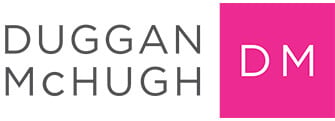In Part 1 of this post, we introduced the December 2018 case of Moreno v. Visser Ranch, Inc., in which a California appellate court addressed issues of employer liability for losses or injuries caused by an employee when he or she was acting within the scope of employment; specifically, in that case, the employer had allowed an employee to use its company vehicle for business and personal reasons and the employee got into an accident leaving his passenger son inured. The son sued, among other parties, his father’s employer, who owned and insured the vehicle he was in when the accident happened.
The driver, Mr. Moreno, was allowed to operate the company truck for around-the-clock use during both work and personal time.
Two tests
In reversing the trial court’s decision and finding the employer potentially liable for its employee’s son’s injuries, the appellate court explained that two different tests may be applied to determine whether an employee acted within the scope of employment.
Purton test: An employer is liable for injury caused by an employee if the employee’s activity that caused him or her “to become an instrument of danger to others” was done with the permission of the employer and either benefitted the employer or “constituted a customary incident of employment.”
Halliburton test: Under this test, an employee’s conduct is within the scope of employment if (1) the act performed was either required or incident to the duties; or (2) the employee’s misconduct could be reasonably foreseen by the employer in any event. This question looks at whether the employer’s enterprise “creates inevitable risks as part of doing business”
Summary adjudication was inappropriate
Analyzing the case under both the Purton and Halliburton test, the appeals court reversed the summary adjudication of the trial court in favor of the employer, finding that there were triable issues of material fact under both tests:
- Was there benefit to the employer for Mr. Moreno to drive the company vehicle for a personal trip since he was always available to respond to urgent employer needs or because he had been driving his son to work for the employer?
- Did the employer require Mr. Moreno to drive the truck to and from personal events?
- Did driving the truck serve “dual purposes” both private to the employee and in furtherance of the employer’s enterprise?
- Was Mr. Moreno’s personal use of the truck foreseeable?
- Was Mr. Moreno’s use of the vehicle “purely personal” or was there also benefit to the employer?
Public policy
California bases its respondeat superior theory of liability on the principle that an employer is better able to absorb “foreseeable losses” from operation of its business enterprise than is a plaintiff who suffered harm from that operation. For example, the employer could purchase an insurance policy to help absorb the risks of doing business.
Lessons for Northern California employers
It is important that California employers discuss with an experienced employment attorney what respondeat superior liability could result when they allow employers to use employer-owned or employer-insured vehicles in a variety of contexts. Depending on the circumstances, employers may wish to differently define requirements of the job in this context.
